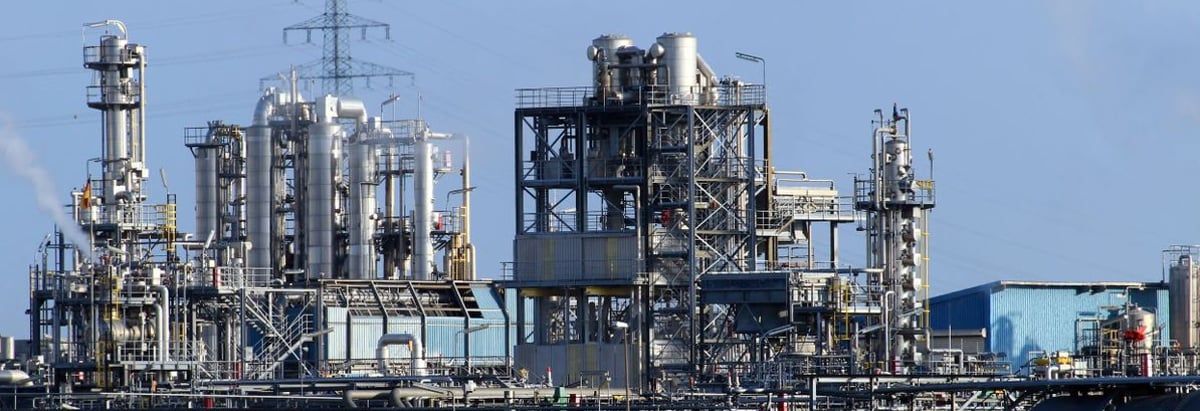Stock Analysis
- Japan
- /
- Oil and Gas
- /
- TSE:5020
Here's Why ENEOS Holdings (TSE:5020) Has A Meaningful Debt Burden

Howard Marks put it nicely when he said that, rather than worrying about share price volatility, 'The possibility of permanent loss is the risk I worry about... and every practical investor I know worries about.' When we think about how risky a company is, we always like to look at its use of debt, since debt overload can lead to ruin. As with many other companies ENEOS Holdings, Inc. (TSE:5020) makes use of debt. But the more important question is: how much risk is that debt creating?
When Is Debt A Problem?
Debt assists a business until the business has trouble paying it off, either with new capital or with free cash flow. In the worst case scenario, a company can go bankrupt if it cannot pay its creditors. However, a more usual (but still expensive) situation is where a company must dilute shareholders at a cheap share price simply to get debt under control. Of course, plenty of companies use debt to fund growth, without any negative consequences. When we examine debt levels, we first consider both cash and debt levels, together.
View our latest analysis for ENEOS Holdings
What Is ENEOS Holdings's Debt?
As you can see below, ENEOS Holdings had JP¥2.85t of debt at June 2024, down from JP¥3.37t a year prior. However, it does have JP¥655.7b in cash offsetting this, leading to net debt of about JP¥2.19t.
How Healthy Is ENEOS Holdings' Balance Sheet?
We can see from the most recent balance sheet that ENEOS Holdings had liabilities of JP¥3.02t falling due within a year, and liabilities of JP¥3.37t due beyond that. Offsetting this, it had JP¥655.7b in cash and JP¥1.56t in receivables that were due within 12 months. So it has liabilities totalling JP¥4.18t more than its cash and near-term receivables, combined.
The deficiency here weighs heavily on the JP¥2.28t company itself, as if a child were struggling under the weight of an enormous back-pack full of books, his sports gear, and a trumpet. So we definitely think shareholders need to watch this one closely. At the end of the day, ENEOS Holdings would probably need a major re-capitalization if its creditors were to demand repayment.
In order to size up a company's debt relative to its earnings, we calculate its net debt divided by its earnings before interest, tax, depreciation, and amortization (EBITDA) and its earnings before interest and tax (EBIT) divided by its interest expense (its interest cover). Thus we consider debt relative to earnings both with and without depreciation and amortization expenses.
ENEOS Holdings's net debt is 2.8 times its EBITDA, which is a significant but still reasonable amount of leverage. However, its interest coverage of 27.9 is very high, suggesting that the interest expense on the debt is currently quite low. Notably, ENEOS Holdings's EBIT launched higher than Elon Musk, gaining a whopping 546% on last year. The balance sheet is clearly the area to focus on when you are analysing debt. But ultimately the future profitability of the business will decide if ENEOS Holdings can strengthen its balance sheet over time. So if you want to see what the professionals think, you might find this free report on analyst profit forecasts to be interesting.
But our final consideration is also important, because a company cannot pay debt with paper profits; it needs cold hard cash. So the logical step is to look at the proportion of that EBIT that is matched by actual free cash flow. In the last three years, ENEOS Holdings's free cash flow amounted to 23% of its EBIT, less than we'd expect. That's not great, when it comes to paying down debt.
Our View
While ENEOS Holdings's level of total liabilities has us nervous. For example, its interest cover and EBIT growth rate give us some confidence in its ability to manage its debt. When we consider all the factors discussed, it seems to us that ENEOS Holdings is taking some risks with its use of debt. So while that leverage does boost returns on equity, we wouldn't really want to see it increase from here. There's no doubt that we learn most about debt from the balance sheet. But ultimately, every company can contain risks that exist outside of the balance sheet. Case in point: We've spotted 2 warning signs for ENEOS Holdings you should be aware of, and 1 of them doesn't sit too well with us.
If you're interested in investing in businesses that can grow profits without the burden of debt, then check out this free list of growing businesses that have net cash on the balance sheet.
Valuation is complex, but we're here to simplify it.
Discover if ENEOS Holdings might be undervalued or overvalued with our detailed analysis, featuring fair value estimates, potential risks, dividends, insider trades, and its financial condition.
Access Free AnalysisHave feedback on this article? Concerned about the content? Get in touch with us directly. Alternatively, email editorial-team (at) simplywallst.com.
This article by Simply Wall St is general in nature. We provide commentary based on historical data and analyst forecasts only using an unbiased methodology and our articles are not intended to be financial advice. It does not constitute a recommendation to buy or sell any stock, and does not take account of your objectives, or your financial situation. We aim to bring you long-term focused analysis driven by fundamental data. Note that our analysis may not factor in the latest price-sensitive company announcements or qualitative material. Simply Wall St has no position in any stocks mentioned.
About TSE:5020
ENEOS Holdings
Through its subsidiaries, operates in the energy, oil and natural gas exploration and production, and metals businesses in Japan, China, Asia, and internationally.


